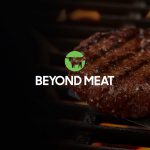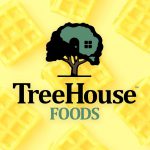Report: Bifurcated Consumer Spend Favors Branded, Private Label M&A

Today’s volatile macroeconomic environment – characterized by inflation and ballooning consumer debt – has heavily influenced shopping behavior within the food and grocery space, creating “unprecedented,” bifurcated consumption patterns and significant M&A opportunities, according to a new report by Capstone Partners.
High-income shoppers have shown inelastic demand despite widespread pressures on consumer spending and continue to add premium-positioned products to their carts. Conversely, middle- to low-income consumers have sought value-oriented products, often trading down to private label.
“A significant portion of the population is buying primarily on price, while more affluent consumers are purchasing premium and specialty food products despite elevated prices lingering from the recent inflationary period,” said Brian Boyle, managing director at Capstone Partners, in the report.
Consumers may soon find some relief: growth in food prices has steadily decelerated, increasing by an average of 2.3% year-over-year in the first six months of 2024 versus 3.5% in the final six months of 2023, according to the Bureau of Labor Statistics (BLS). This may, in turn, help support volume growth for both branded and private label items, the report states.
Across the industry, the M&A outlook is also positive, according to the report, with major players signaling an appetite for inorganic growth to strengthen sales volumes and capture wallet share in 2025. For example, during its Q1 earnings call last month, Cheerios maker General Mills announced plans to shift its focus to bolt-on acquisitions of “smaller size assets” to enhance growth.
In 2024, overall M&A activity in the food industry rose 5.3% year-over-year to 180 transactions announced or completed – including Mars’ $36 billion pending acquisition of Kellanova, Our Home’s acquisitions of Pop Secret and ParmCrisps and the Atlanta Corp.’s purchase of Big Picture Foods.
Both strategic and financial buyers have expressed a growing appetite for acquisitions in the branded segment, which saw the highest rate of transaction activity – 86 deals so far this year – among food industry M&A. Consolidations among strategic players in the branded space have also increased, with 51 private or public transactions announced or completed in 2024 compared to 41 last year.
Valuation Adjustments Sparking M&A
According to the report, a settling of valuation expectations is helping to unblock transactions. Between 2018 and 2023, pandemic-induced supply chain disruptions and interest rate hikes caused both strategic and financial buyers to shy away from dealmaking due to “unjustly high” seller valuation expectations, per the report. Now that sellers are lowering their valuations to match market demand, volumes are rebounding.
As consumer preference shifts toward value products, M&A opportunities are also opening up for private label manufacturers. In 2023, U.S. private label general food dollar sales grew 10% to $42.6 billion, according to the Private Label Manufacturing Association.
However, private label general food only accounted for 15.4% of total U.S. grocery sales in 2023, compared to Europe, where private label products comprise 40% of annual grocery sales. Stateside retailers are expected to continue launching private label initiatives (see Walmart’s new bettergoods brand or Amazon’s Saver launch) to keep reaping a positive margin impact.
From a financial perspective, private label platforms have been attractive for their ability to build symbiotic relationships with leading retailers, per the report. Last year, private label transactions accounted for a record percentage (25.9%) of deal volume within the manufacturing industry.
Looking ahead, Capstone expects the private label segment to garner increased interest “as strategics consolidate the fragmented U.S. market and private equity buyers look to establish platforms and execute roll-up strategies amid a lack of scaled players.”















